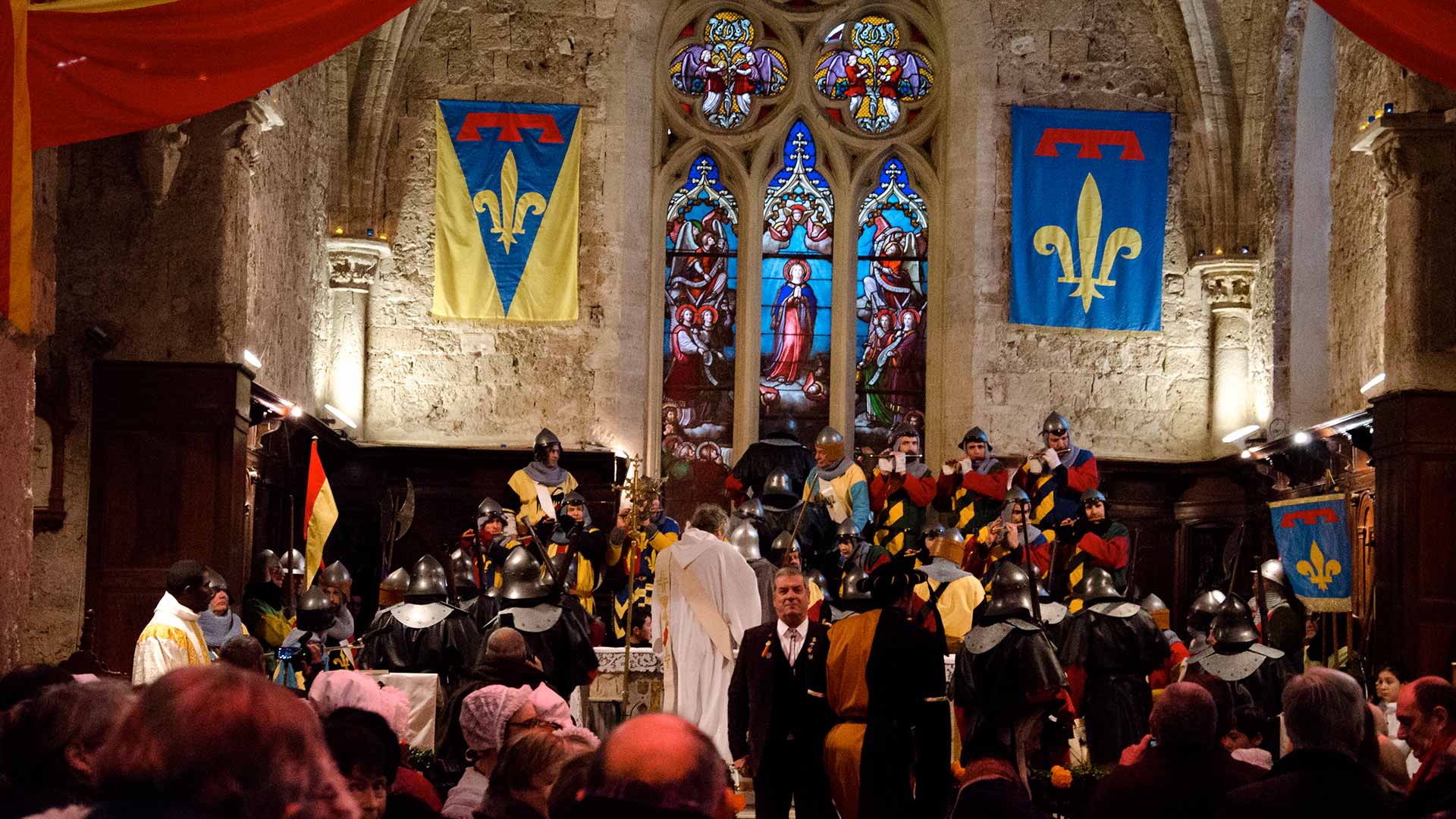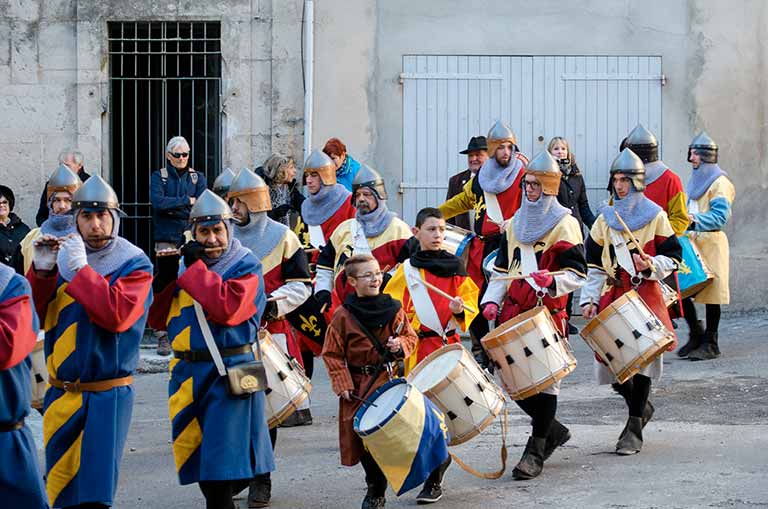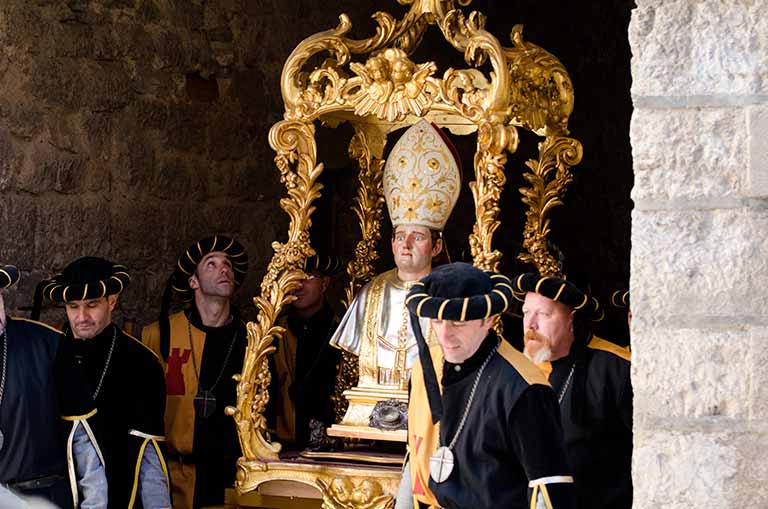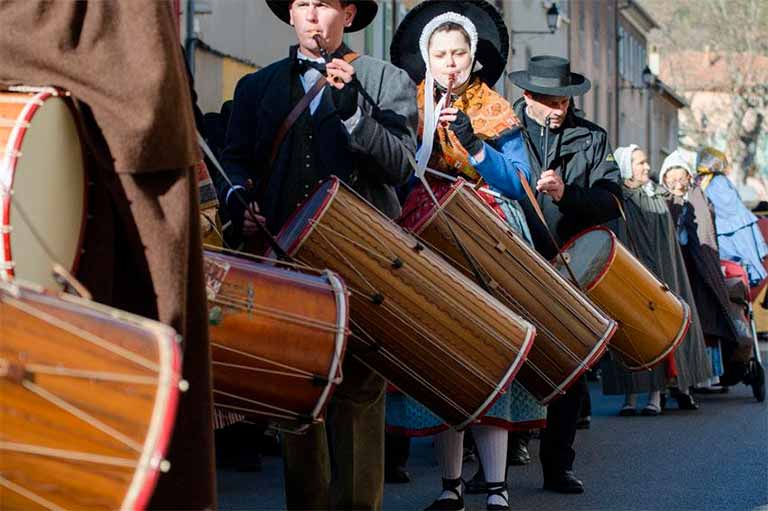
"la fête des Tripettes"
Today, Saint Marcel's Day goes hand in hand with a village festival, oxen walk, fife and drums and a curious dance that takes place in the church, where believers and non-believers alike are invited by the priest to hop about in the square. This half Christian, half pagan festival has its roots in the Middle Ages.
MORE THAN A BISHOP, A SAINT

After two years in exile, he was called to the bedside of Euric's son, who was ill. During the journey, Marcel prayed before the various oratories. The sick child was cured. Thanks to this miracle, he successfully brought himself and his people back to Die. There were a number of other miracles - the last one took place in Die during the construction of a baptistery when a stone column was stopped from falling by the Saint at prayer. Marcel died peacefully in Montmeyan at the age of 80 in the Saint Maurice Monastery on his way back from a trip to Rome where he had met with Pope Symmachus.
WHO WAS SAINT MARCEL?
Marcel was born in Avignon into a noble family. He was educated by his elder brother Petronius, Bishop of Die (Drôme), who ordained him a deacon and prepared him to be his successor.
In 463, Petronius died and the inhabitants of the city were divided between two contenders. After a vote, Marcel was chosen as the new Bishop of Die. He was ordained by the Bishop of Vienna.
During his episcopate, King Euric had the population of Die deported. The Bishop was then placed under house arrest in Arles, where he miraculously escaped the collapse of the building he was living in. But still too popular, he was exiled to the Conserans region (Ariège).
SAINT MARCEL'S RELICS

In 510, Marcel was buried in the Saint Maurice monastery, near Montmeyan. His tomb was highly revered and he was proclaimed a saint. In the 11th century, some of his relics were taken to the Abbaye de la Chaise Dieu (Auvergne). Towards the end of the 12th century, the remaining relics were transferred to the nearby Saint Maurice commandery. In the 16th century, the buildings were abandoned and almost in ruins, with only a caretaker remaining there. The Saint appeared in a vision to the solitary guardian and asked him to have his relics transported to a place more worthy of him. The villages of Barjols and Aups, which each have a collegiate church, claimed the relics. The inhabitants of the Tavernes, called "the advocates", advised the Barjols villagers to seize the relics without waiting for a decision from the religious congregation. They hurried to the deserted commandery and stole Saint Marcel's relics. They triumphantly entered Barjols singing and dancing "Saint Marcel, Saint Marcel, les tripettes". Saint Marcel's relics were then placed in a silver shrine and piously kept in the collegiate church. In 1562, after a four day siege, Barjols fell into the hands of the Protestants who burned the relics, including those of Saint Marcel. Only one phalanx remains. A polychrome reliquary bust containing this phalanx is kept in the Collegiate Church of Notre Dame de l'Assomption in Barjols.
FÊTE DES TRIPETTES

When the people of Barjols brought back the relics in 1350, they came across some women washing the guts of an ox that had been slaughtered for a memorial celebration. It is a celebration of the ox that was within the walls of the besieged village and saved the inhabitants from starvation. A joyful procession formed and on entering the church, mixing the secular and the sacred, the inhabitants of Barjolais sang for the first time "Saint Marcel, Saint Marcel, les tripettes, les tripettes" while jumping on the spot. Every four years "les petits tripettes" become "les grandes tripettes" with the "walk of the ox" – it is made to drink from all the fountains in the village and blessed.